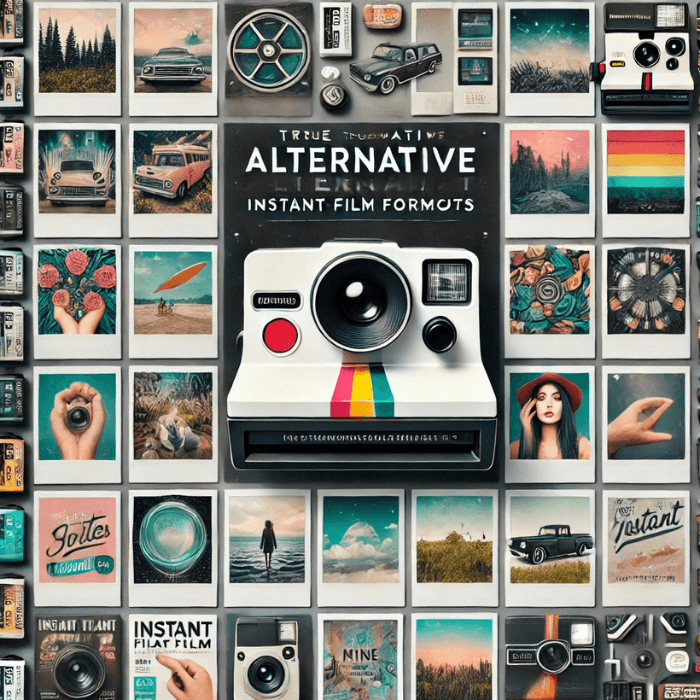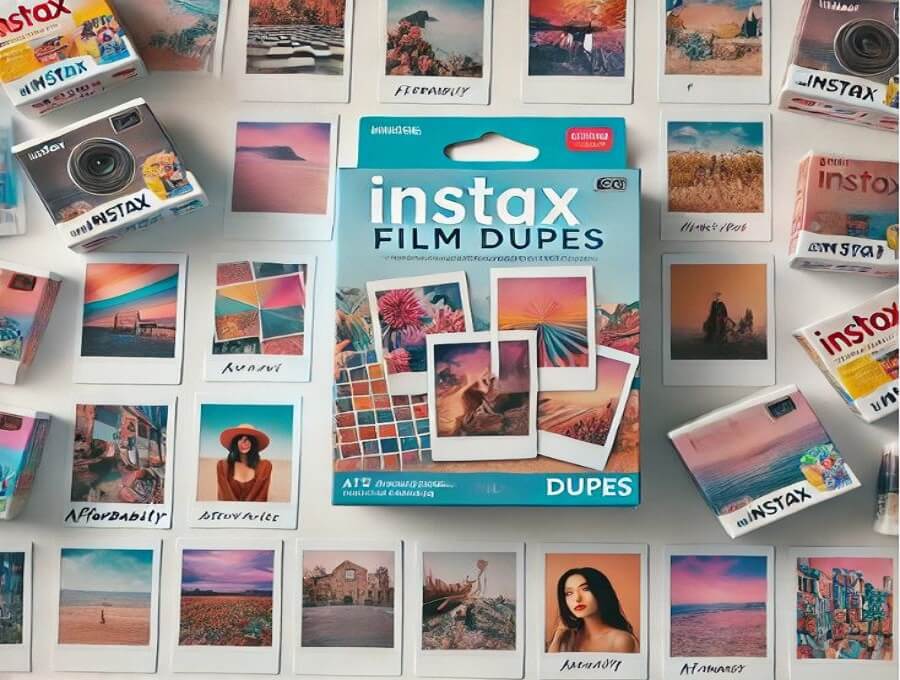Below is a detailed discussion on whether “Instax film dupes” (i.e., cheaper or off-brand film that works with Fujifilm Instax cameras) actually exist, along with tips on budget-friendly shooting and true alternative instant-film formats.
Understanding the “Instax Film Dupes” Question
Instant photography has soared in popularity in recent years, especially with Fujifilm’s Instax lineup of cameras. People love the nostalgia of getting a physical print moments after snapping a shot, but the cost per print can add up quickly. Naturally, many enthusiasts start searching for cheaper film options or “dupes” that might work in their Instax Mini, Wide, or Square cameras.

The big question: Is there actually an off-brand Instax film on the market? The short answer is no. No third-party manufacturer has produced an Instax-compatible film that can be purchased for less money than genuine Fujifilm film [2] [3]. In fact:
- Fujifilm holds the proprietary technology for Instax film.
- Polaroid’s instant film and Leica Sofort’s film are also produced by Fujifilm (for the Leica Sofort) or by Polaroid for its own cameras—none of them are directly compatible with Instax formats.
- It takes intricate chemistry and infrastructure to produce each cartridge of instant film [2]. This isn’t simply a matter of rolling film into a canister.
Because of this, you won’t find an “Instax Mini, Wide, or Square” film cartridge made by another brand. There are no known knockoffs or “dupes” for Instax [2] [3].
Why No One Else Makes Instax Film
Developing instant film capable of producing consistent, high-quality prints instantly necessitates the use of specialized chemicals, advanced coating techniques, and a variety of proprietary processes. The film must also fit exactly into Instax cameras, feeding smoothly through the camera’s rollers when you take a picture.
Here’s why no other company has successfully replicated it:
- Complex Proprietary Production: Instant film is one of the most complicated types of photographic film to produce. Fujifilm has decades of experience and patents that protect its method of film production.
- Large-Scale Manufacturing: Instax’s popularity relies on Fujifilm’s ability to manufacture and distribute globally. No smaller challenger can match that scale easily.
- Chemical Formulations: Each sheet of Instax film carries multiple layers of light-sensitive emulsions, reagent pods, timing coatings, and more. These precise layers activate and develop images in seconds.
That’s why, over the years, no off-brand film for Instax cameras has made it onto shelves—or even popped up as a rumored future product.
Tips for Saving Money on Instax Film
1. Buy in Bulk
A common recommendation in the Instax community is to purchase film in larger packs (10 or more) online. This can often bring the cost-per-print down, and you’ll always have plenty on hand [2].
2. Watch for Sales and Deals
Observe the sales during major shopping holidays such as Black Friday and back-to-school. Online market sites sometimes feature bundle deals that can reduce the cost per shot.
3. Be Intentional When You Shoot
Instant photography is all about the charm of physical prints. But you can save yourself from wasted shots—and wasted money—by taking a quick beat to properly frame your photo before pressing the shutter. Some people do a “test shot” with their phone first to see if the lighting and compositional aspects look good.
4. Consider a Hybrid Instax Camera
Fujifilm’s Instax Mini Evo (or other hybrid models like the Instax LiPlay) lets you pick the images you want to print from a small LCD screen. This helps reduce the number of “throwaway” prints you might otherwise develop blindly.
True Alternative Instant-Film Formats
If your goal is to find a different brand of instant film altogether (not necessarily one that goes into an Instax camera), there are a few routes to explore:

- Polaroid Originals / Polaroid Now
- Larger prints than Instax.
- Film typically costs more per shot than Instax.
- Not compatible with Instax cameras (uses its own proprietary film).
- Polaroid Go
- Cute and compact, it offers smaller prints closer to a “mini” size.
- Film is still more expensive than Instax Mini on a per-print basis.
- Again, can’t be used in an Instax camera
- Lomography Cameras (some use Instax film)
- Lomography has cameras that do take Instax Mini or Square film.
- But the film itself is still genuine Instax and thus the same price.
- ZINK (Zero Ink) Paper
- Used by certain Kodak and Canon instant printers and cameras.
- Not chemically developed in the same way as Instax or Polaroid.
- Requires a specific ZINK-compatible camera/printer.
In other words, alternatives exist in the wider instant photography universe, but none of them will serve as a direct “dupe” or a cheaper Instax film. They’re merely competing products with their own cameras and film systems.
In Conclusion:
While it’s natural to look for an Instax film “dupe” to reduce costs, no off-brand film exists for Instax cameras [2] [3]. Fujifilm’s hold on the technology—and instant film’s inherent complexity—keeps it that way. If you love the Instax experience but want to save a few dollars, your options are:
- Bulk or sale purchases to lower the cost per shot.
- Hybrid cameras that let you print only the photos you like.
- Being more mindful when you shoot to avoid wasting film.
If budget is your highest priority, you might also try alternative instant-camera formats like Polaroid or ZINK-based systems. However, each has its own film ecosystem, and no cheaper brand name has emerged to replace genuine Fujifilm Instax film in an Instax camera.
In the meantime, many photographers find the unique aesthetics and joy of an Instax print well worth the price—particularly when combined with a little treasure-hunting for film deals. Happy shooting!


